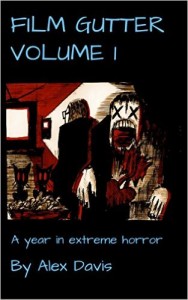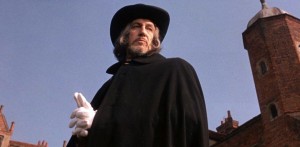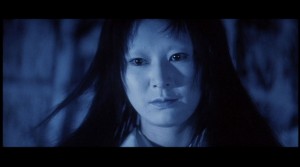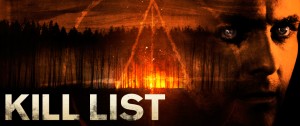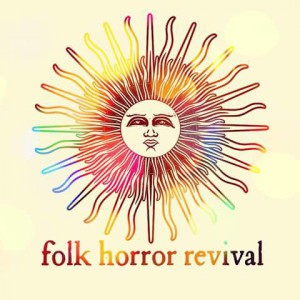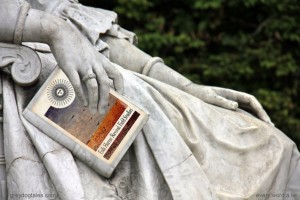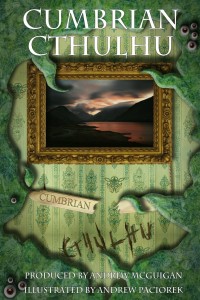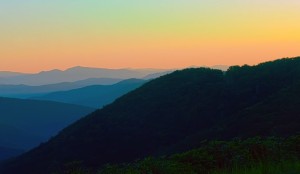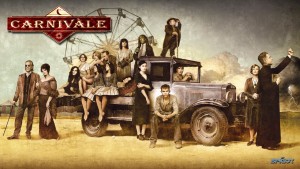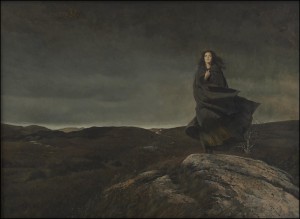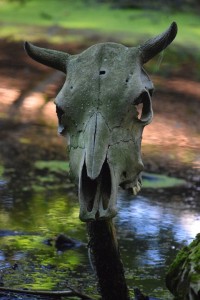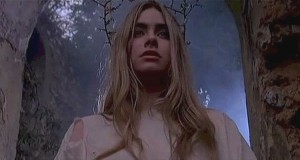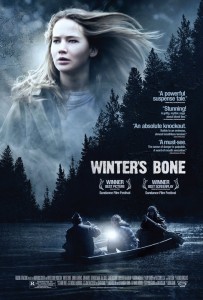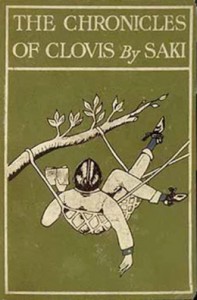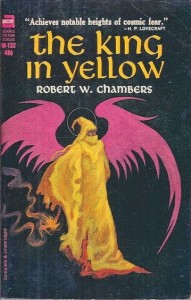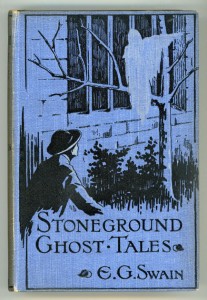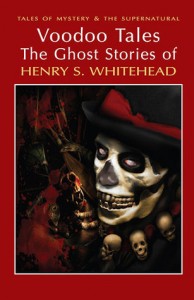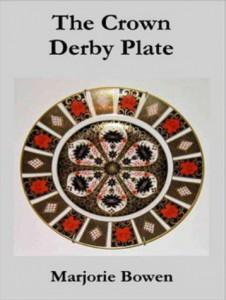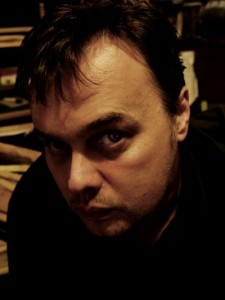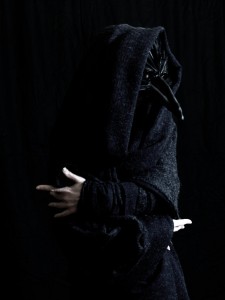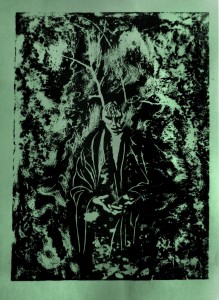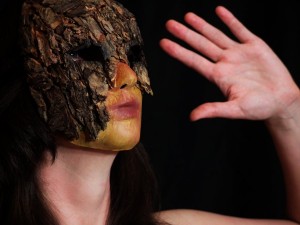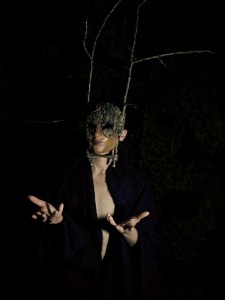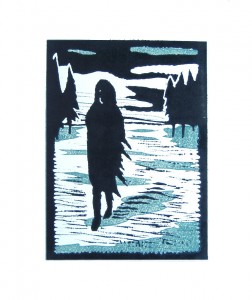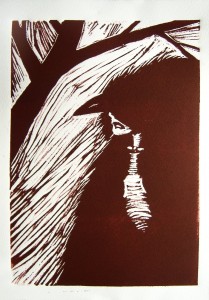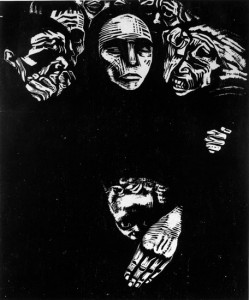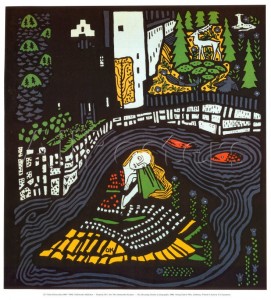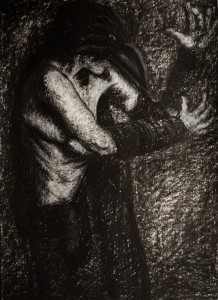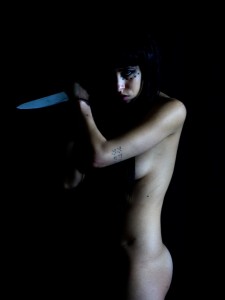And we’re back, with Part Two of our Andy Paciorek feature. This time we focus down on his folk horror artwork, how he does it, where it comes from and where it’s all going. And we present a range of his illustrations, a feast for the eyes.
Not a feast of eyes, please note. That would upset the local coroner again, and we had a lot of trouble last time. You can only plead the headaches so many times…

greydog: Andy, hello again. So, weird art – it’s why we first noticed you, and what we hunt out here on greydogtales. Regardless of FHR, you’ve been an artist in your own right for a number of years. Your Strange Lands website was recognised in the Froudian Artists Awards in 2008, and covers creatures from Celtic myth and legend. Was this your first major venture?
andy: In the area of darker more mythic art, yes it was my first venture into this area. So that was extremely complimentary and inspiring that such a tremendous talent in the field as Brian Froud would select my work as one of the best of the year on his fantastic World of Froud website.
Prior to that I was writing and illustrating comic strips for small press publications, zines, mail art projects and on community based arts projects. I then took a few years out and literally ran away with the show-folk as I joined a travelling carnival that took me from Wales to South East Asia and the Middle East. When I returned to art, it was rather different to what I had been producing before.
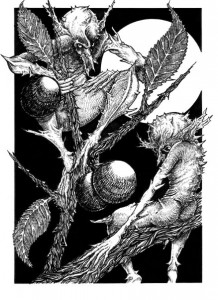
greydog: Strange Lands draws on the Celtic Otherworld, as we said, but one of your current illustrated projects, Black Earth, draws on the Slavic Otherworld. What was your inspiration for artwork based on Slavic tales?
andy: After Strange Lands, the desire grew within me to approach the supernatural entities and creatures of various different cultures in a heavily illustrated field-guide type format. My father is Polish (my mother was Italian – they met in Middlesbrough in the north of England so quite a mix there) and on a visit to Poland, the idea of doing a Slavic based book took seed in my mind.
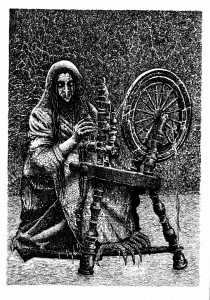
At that time there were very few Slavic lore books available in English in Britain (there have been a few more since, but as myths and legends go it is still comparatively under-represented in western publication) but other work prevented me from starting on the Black Earth book for a few years, then I had to put it aside as I concentrated again on commissioned work, some smaller personal projects and then life situations came to the fore which also for a while diverted my attentions elsewhere. But I have returned to Black Earth and have made good ground on it. The writing is for the most part complete and the majority of illustrations done – however when I embark on personal illustrated books we are sometimes talking over a hundred illustrations per book not a handful so there are still a few dozen to do. But hopefully 2016 may see it released.
It’s an interesting project to work on. There are some very intriguing denizens of Slavic lore, some very dark ones also, which for me are a great pleasure to draw.

greydog: We usually ask something about technique or media, for anyone who’s feeling creative. What do you prefer to use when getting down to work – pen, charcoal, acrylics? Paper, a computer screen or a cunningly scraped goat-skin?
andy: Nothing as exotic as goat skin I’m afraid, I may have to try that for a future project. My parents used to keep goats when I was a kid (bad pun). They’re feisty critters, I doubt one would keep still long enough for me to draw on it!
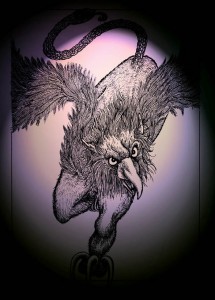
I actually prefer a very direct route from idea to image. Pen on paper suits me best. I rarely paint and when I do it is very different to my drawings, I paint loosely and quickly in an expressionistic manner (though I do think my drawing is quite expressionistic too in a manner, it is more detailed and takes a bit longer). I haven’t actually painted for a few years now and my last painting was in collaboration with the exciting artist Dr Steg on our Stegorek project.

In drawing I used to do more sketchbook rough compositions but more recently I have used photoshop to create photo-montaged collages to work out compositions. Having completed the ink drawing I will scan it into photoshop just mainly to do basic touch-up work, but may occasionally add colour filters, but I prefer mostly to work in black and white. I reserve colour more for my photography work these days.

greydog: We’ve had John Coulthart on greydogtales, of course, and mentioned other contemporaries like Santiago Caruso, as well as some classical illustrators. Who do you particularly admire?
andy: Both of the artists you mention are excellent artists whom, through the wonder of the internet, I’ve been lucky enough to have had communication with. Though I have a love-hate relationship with technology (though sometimes I think on its side it just hates me! Amazing when it works, awful when it doesn’t and I do seem to attract glitches and gremlins), the internet in its favour has made it far easier to see the work of both older less familiar art and contemporary artists, and there are some truly astounding artists out there. Too many to name individually as it would be a disservice to those I’d left out. What I admire in work is a sincerity of style and motive and an interesting individual eye.
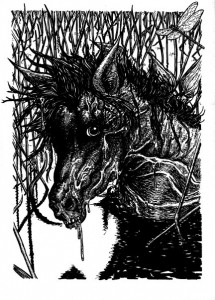
Of all art I particularly love the Symbolist and Decadent movement, Romanticism, Expressionism, Flemish Primitivism / Northern Mannerism, Victorian fairy painting, Golden Age book illustration, pulp art, Ukiyo-e and the graphic works of artists such as Gustave Doré, Goya and Max Ernst.
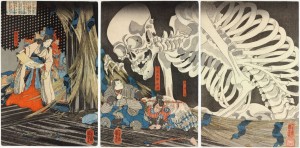
greydog: Yes, Doré remains inspirational for so many illustrators of the weird (see also our post john coulthart – axioms & other dark beasts) When we were much younger creatures, one of our favourite disturbing possessions was the old Dover edition of Goya‘s Los Caprichos, still in one piece and treasured today. It’s a source of monstrous images which we should cover in more detail some time.
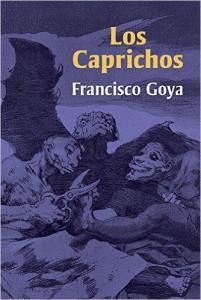
Do you have a personal favourite among your own artistic pieces or projects, one which gave you particular satisfaction?
andy: I’m not sure if I do. With having a pretty massive oeuvre of work, there’s a lot to choose from. It’s always interesting to see which pieces other people pick out as their favourites of my work, as frequently it’s quite surprising and diverse.
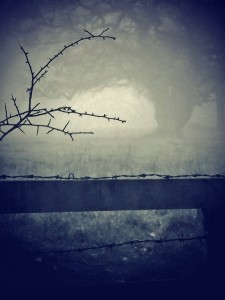
Satisfaction wise, I’ve enjoyed working on collaborations such as those done as Stegorek and the Balcan~Paciorek projects, and illustrating the stories by different authors for Cumbrian Cthulhu and some other projects. For my solo work it’s always satisfying to complete personally epic projects such as Strange Lands.
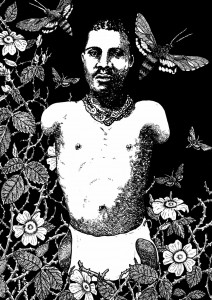
For my Human Chimaera book which provides over a hundred visual and textual portraits of ‘sideshow freaks’ was satisfying for a different reason as my intention was to present the subjects both with a respectful human portrayal but also to highlight the fantastic world that their stage names or descriptions suggested. I think I succeeded in pulling that off, so that was rather satisfying.
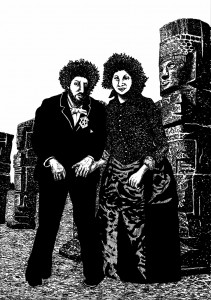
greydog: We end with the year ahead. FHR’s Corpse Roads, Black Earth and so on – these books are all hopefully coming. Do you have other artistic plans for the year, or will these pretty much take up all of your time?
andy: They are pretty time-consuming, but by necessity I need to do commissioned work also when it presents itself to keep the wolves from the door. In recent years I’ve been fortunate to have worked on a number of books for Harper-Collins for their Element Encyclopedia and Art for Mindfulness titles. The subject matter there has ranged from vampires to adult colouring books, so that’s also been interesting to work upon and forces me to have a bit of greater diversity in my output, which is not a bad thing. We’ve had initial talks about further projects, so touch-wood they will be knocking on the door again in not too distant future.
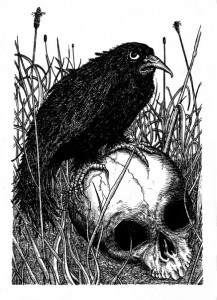
greydog: We wish you good fortune in all your projects, and many thanks for joining us, Andy Paciorek!
andy: My pleasure, thank you for asking.
We included a number of Folk Horror Revival links last time, in andy paciorek part one. A link to the FHR book itself is on the right-hand sidebar, and many of Andy’s drawings can be found via Facebook. You can also visit Andy’s great site dedicated to the Celtic Otherworld here:
Note for Revivalists: Our next Folk Horror article will be a feature on FHR writer/photographer David Senior, coming next week.
####
FILMS FROM THE GUTTER
Before we disconnect the microphones, sweep out the studio and default on the electricity bill, a last something not connected to folk horror. We don’t say a lot about films on here (which may change, but we do have our hands full with fiction and illustrative art most of the time).
We have however mentioned the extensive news, content and reviews site that is Ginger Nuts of Horror here before, and they do cover films.
The Nuts are now publishing their own book, which will feature the full collection of 2015 reviews and interviews from their popular Film Gutter series, looking at some of the most bizarre, grotesque and disturbing horror features ever made.
It’s dead good value, so if you like worrying, full-on horror films, you should check out the rest of the details here:
But be warned. The Nuts do have a penchant for some dark, unpleasant stuff. Not like dear old creepy J Linseed Grant and his bad-tempered ponies.
####
And we should be away. We couldn’t show all the Paciorek drawings we wanted to this time, but we may slip one or two in as we charge along towards Spring. Here’s one we rather liked as a last little reminder, from The Petrification of Phillipa Hesse, a cautionary tale by Damian Leslie & Andy Paciorek (2005/6).

Next week on the same wavelength: Something about lurchers, more scary stuff and we’re building up to our next big theme, the watery weird that we call Stranger Seas. We can’t help ourselves…

